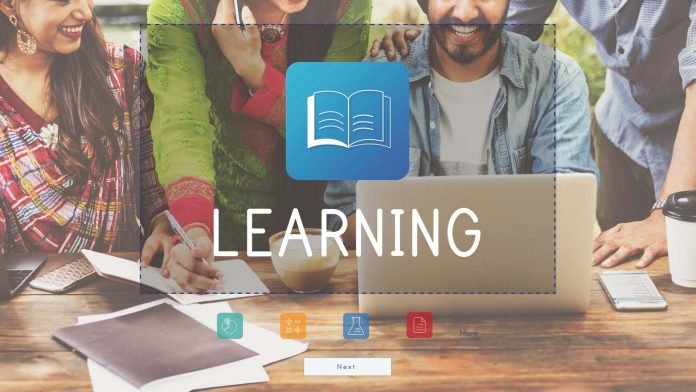The way we work is changing. For many, work is no longer tied to a specific, shared location, or a specific time of day. Technological advances have removed boundaries, enabling work across different locations and time zones. Employees, both full and part-time, increasingly work seamlessly with partners, contractors, and freelancers as one team. In short, hybrid working is here to stay. Now hybrid learning must become the new normal.
Fluid learning focuses on skills, not job titles
Shifting workplace priorities, together with a worsening talent shortage, have driven organizations to move away from traditional job-centric learning and development programs to a more skills-based approach. There is now greater recognition of the importance of skills in helping people and businesses succeed. Skills-led hiring is in the ascendancy: recent LinkedIn data reveals that 40% of hirers now use skills information when hiring via the platform, a jump of 20% from the year before, and that this skills-based approach is working, resulting in 60% more successful hires.
To be effective against a backdrop of remote working and changing job roles, fluid learning earns its name by being dynamic, personalized, and accessible from anywhere. Most importantly, training must be pegged against real-world impacts, rather than course completion rates. In other words, learning must be fluid in content and delivery, but retain a laser focus on business metrics.
How hybrid working has paved the way for hybrid learning
As the way we work has changed, how we approach training and development is also evolving. Not only has hybrid working altered the how, when, and where of work, it is also transforming the “what”. Roles are becoming more distributed, fluid, and skills-based. In addition, those skills are becoming more transient. Workplace skills now typically have a half-life of five years, or as little as two and a half years in the case of technical skills, which are often in the highest demand. As a result, upskilling the workforce is a business imperative and a condition of future competitiveness.
To address these talent and skills gaps in our increasingly hybrid, distributed work environments, learning and development is becoming more flexible and dynamic. For example, companies are now focusing on creating learning content that is not only relevant to the specific skill gaps and job roles but also accessible in diverse settings, whether employees are in the office, at home, or on the move. This boundaryless approach ensures that learning and development are seamlessly integrated into the daily workflow, regardless of the physical location of the workforce.
Moreover, this trend highlights the importance of moving away from a rigid approach to content distribution. According to another study, 54% of employees would spend more time learning if they had specific course recommendations to help them reach their career goals. Learning content must be dynamic and tailored to the unique needs of each employee, taking into account their specific job role, location, and current work situation. This could mean providing bite-sized learning modules for employees to access during short breaks, or more in-depth training that can be engaged with during longer periods of focused work, or even ongoing on-the-job training via AI-based assistants. The goal is to support continuous learning and performance enhancement in a way that aligns with the evolving nature of work in a hybrid world, ensuring that employees have the flexibility and resources they need to succeed in their roles.
The role of AI in driving effective learning
Training needs vary greatly from employee to employee. For example, digitally native Gen Z-ers may instinctively grasp the digital aspects of their job, but need additional support acquiring softer skills, such as negotiating, networking, and public speaking. Using AI-driven insights, organizations can understand the specific skills an employee needs most and target courses accordingly. AI’s ability to process and interpret unstructured feedback and performance data is pivotal in creating these targeted learning opportunities. Consider a developer working on a particular project: AI systems can analyze their project involvement and recommend specialized courses to refresh their coding knowledge in key areas. By providing tailored learning resources based on real-time job performance and interests, AI not only fosters skill development but also aligns learning with current industry trends and organizational goals.
Workplace training programs now use AI in many innovative ways beyond smarter content selection and delivery. For instance, AI’s natural language processing capabilities make it ideal to simulate real-life scenarios that are endlessly adaptable around individual learning needs, while virtual and augmented reality enable employees unrivaled training opportunities.
Fluid learning for an agile, skills-based future
Workplace learning and development has changed significantly with the introduction of hybrid, distributed working and the shift away from the traditional job-centric learning model to a skills-based strategy. In response, learning and development programs are becoming more fluid, personalized, and accessible at any time from anywhere. Integrating into the daily workflow in a manner that suits individual employees or teams, learning and development now need to reflect the boundaryless workplace. However, fluid learning must also be focused, scalable, and aligned with business goals. To achieve this, learning and development platforms are making increasingly innovative uses of AI. Its ability to contextualize learning according to a person’s needs and preferences helps organizations deliver more impactful experiences for employees, and, in turn, for their bottom line.
Explore HRTech News for the latest Tech Trends in Human Resources Technology.
ABOUT THE AUTHOR

Ramesh Ramani
CEO & President, ExpertusONE
Ramesh Ramani is the CEO and President of ExpertusONE, a leading cloud-based learning management platform designed to change how learning resources are found, shared, tracked, collaborated on and actually retained. Headquartered in Silicon Valley, As CEO, Ramesh sets the overall strategic direction for the company − ensuring that products, organizational structure, operational practices and guiding principles work together to deliver superior value. A skilled entrepreneur, Ramesh has led many early-stage companies through successful growth. He’s adept at evaluating business opportunities and structuring companies to profitably address market needs. In particular, he excels at forming teams, developing talent and leveraging global alliances. Ramesh is a graduate of Oklahoma State University.













